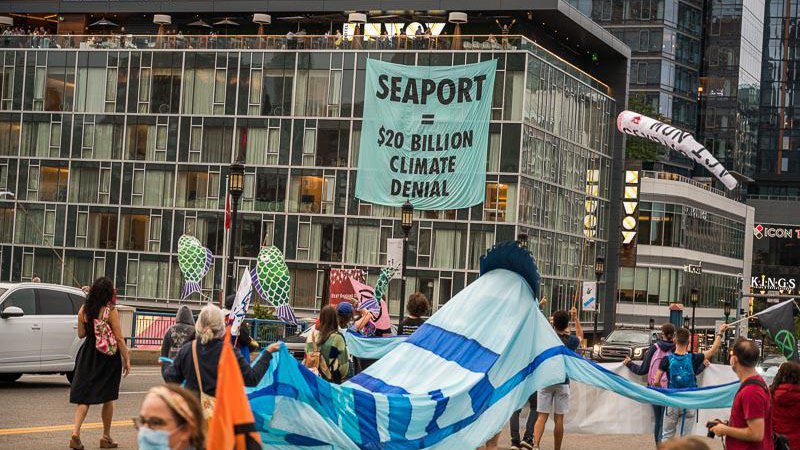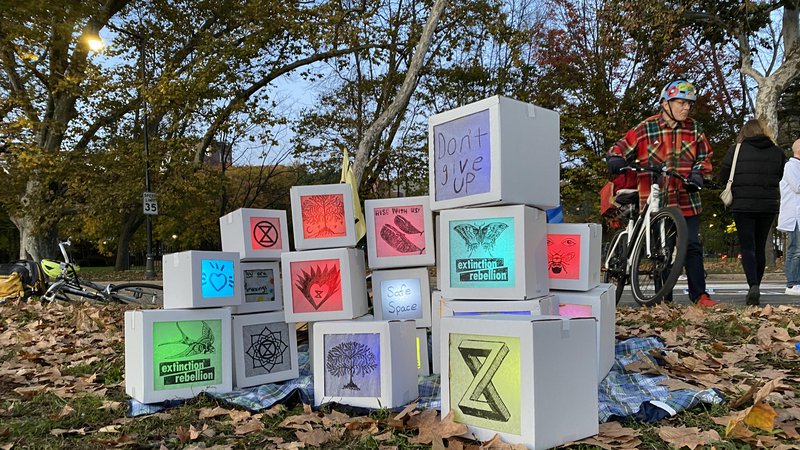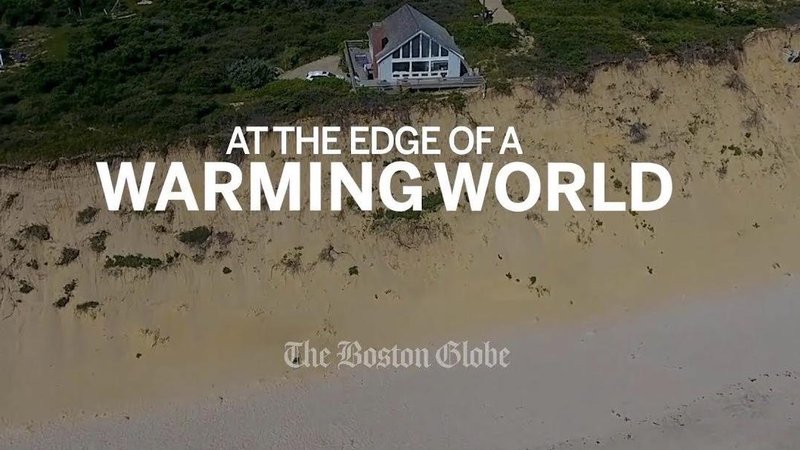
Sea Level Rise and the City of Boston: Where We Stand Today
Remember the days when sea level rise was the biggest discussion in climate circles? That era before the complex realities of human climate migration, unpredictable megastorms, unstoppable wildfires, and unbearable heatwaves started to affect our daily lives? A simpler time, but the issue of sea level rise still exists alongside those currently-urgent troubles, and still threatens Boston's future. According to this Conservation Law Foundation article, in Boston, high tide flooding has accelerated by more than triple the national average. The city – built partly on filled land over the centuries – has registered more high tide flooding than any other city in the country. By 2050, Boston could see between 50 and 70 days of high tide flooding every year.
Unfortunately, the City of Boston has done very little to prepare for sea level rise, despite the results of the Climate Ready Boston report in 2016. Their public plan includes "coastal resilience projects" like elevated waterfront parks, but their actions are in direct opposition to even these feeble precautions. Development continues in the flooding zone, particularly the Seaport neighborhood. Boston Seaport faces extreme risk as sea-levels rise from the effects of human-caused climate change. In a "Flood the Seaport action" in August 2021, XR Boston called for climate action by the city of Boston and pointed to the Seaport as an example of climate change denial and wasted, corrupt investment on a plot of land that will soon be underwater. “The billions of dollars being poured into Boston’s Seaport District is absurd. We are well aware of the risks of the climate crisis and the Seaport District will soon be entirely underwater. Residents of Massachusetts should be angry that the city of Boston is investing in this playground for the wealthy instead of using those billions of dollars to protect Boston and invest in stronger climate action and mitigation. We needed bold action on the climate crisis years ago. We have fallen dangerously behind,” said James Comiskey of XR Boston.
$20 billion of Massachusetts’s tax dollars have been allocated towards building the Seaport neighborhood, referred to by previous Mayor Menino as the “Innovation District.” According to the “Climate Ready Boston Map Explorer,” hosted on Boston’s government website, large portions of the Seaport district will be inundated with coastal flooding as early as 2030, with significant flooding occurring by 2050. By 2030, a single nor’easter could cause up to $1.2 billion of damage in South Boston. By 2070, high tide alone will cover most of the surface area of the Seaport with water. Yet since 2000, 63 development projects have been approved in the South Boston waterfront area.
In 2017, the Boston Planning and Development Agency started requiring new development projects to complete a “Climate Resiliency Checklist,” but the checklist only focuses on adapting to sea-level rise (i.e. access to the building, provisions for emergency water and power during a flooding event) and not prevention efforts. Once a city needs to employ efforts like elevated roadways and tide gates, we've lost the war against sea level ride. We should have stopped developing near floodplains years ago, but the second-best time is right now. Boston needs to enter Climate Emergency Mode. Our city needs to immediately, urgently prepare for the effects of climate change.
What would Climate Emergency Mode look like for Boston?
As expressed in this Mass Streets article, "Transportation remains the Commonwealth's biggest climate liability. The tailpipes on cars, trucks, and other vehicles generate 37 percent of the state's climate pollution – roughly twice as much more than all of the state's fossil-fueled power plants combined. While other sectors of the Massachusetts economy are reducing their consumption of fossil fuels, pollution on the Commonwealth's roadways has been getting worse: highways actually generated more climate-heating pollution in 2015 than they did in 1990, in spite of improved fuel efficiency standards for motor vehicles."
To mitigate the effects of climate change on our city, our government must act now to limit traffic as a source of pollution. In Climate Emergency Mode, new fossil fuel infrastructure is banned as a first step, then existing usage of fossil fuels needs to be limited by providing cleaner options of transportation for residents. Reliable public transportation and safer bike lanes are good steps. Simultaneously, construction of new buildings in flood areas must immediately cease, and action must be taken to protect lower-income residents in regions that will be most affected. Building codes and zoning need to be updated to reflect flooding. We need to maximize green infrastructure like trees, parks, marsh, and other green spaces, which are are nature’s defense against climate change and flooding.
How is the Seaport District an example of the intersections of environmental and class justice?
Climate justice and class justice are inevitably entwined. At $153,545, the Seaport district has the highest median household income of any neighborhood in Boston. It is more than double the average household income for the entire city. It's also one of the least diverse neighborhoods in Boston; 83% of the residents are white. Investing in this wealthy neighborhood, instead of using public tax dollars to invest in preventing climate and ecological collapse, is an egregious act of climate injustice and puts corporate profit over people and planet. It’s a gleaming example of climate denial and inaction in favor of the comfort of a small group of privileged residents.
Obviously, the Seaport's median's income explains the irresponsible development: our government is committed to making life cheerful for the wealthy at the expense of other residents. Boston unfortunately does not include its lower-income citizens in environmental policy that affects their quality of life. East Boston is an excellent example of this trend, where largely low-income residents are choked with pollution from Logan Airport, have lost a promised park space to a dangerous new electrical substation costing taxpayers $106 million, and now are fighting the creation of a "Haul Road" that will invite more heavy vehicles to pump smog into their backyards. Many East Boston residents do not speak English as their first language, so the meetings that Eversource held to "gather community input" before breaking ground on the electrical substation were not heavily attended and concerns were not properly communicated. Even with the language barriers, local activists (including XR Boston) have vocally fought Logan's expansion and the substation's construction.
What can we do about sea level rise?
There has never been a better time to attend an XR Boston orientation and Non-Violent Direct Action Training, to participate in civil disobedience that pressures our government to protect ourselves and our neighbors. Explore our calendar of events and RSVP today!
Related Stories:
Featured:
-
The third annual Week of Rebellion is full of opportunities for celebration and action!
-
Our government had the opportunity to finally turn our state into a "climate leader," and they decided yet again to prioritize profits and political posturing over the well-being of residents.
-
Prominent climate scientists and activists demand immediate climate action in the United States.
-
Stop the Fossil Fuel Industry, Now: List of events for Extinction Rebellion Boston's September week of rebellion
-
A compilation of books, movies, articles, and ways to take action to protect Black lives
-
Nadia Colburn, PhD and member of Extinction Rebellion Media team, discusses how to talk about the climate and ecological crisis with family and friends.
Upcoming Events:
-
Sat Jan 10th @ 3 p.m.
-
Thu Jan 15th @ 7:30 p.m.
-
Mon Jan 19th @ 1 p.m.

